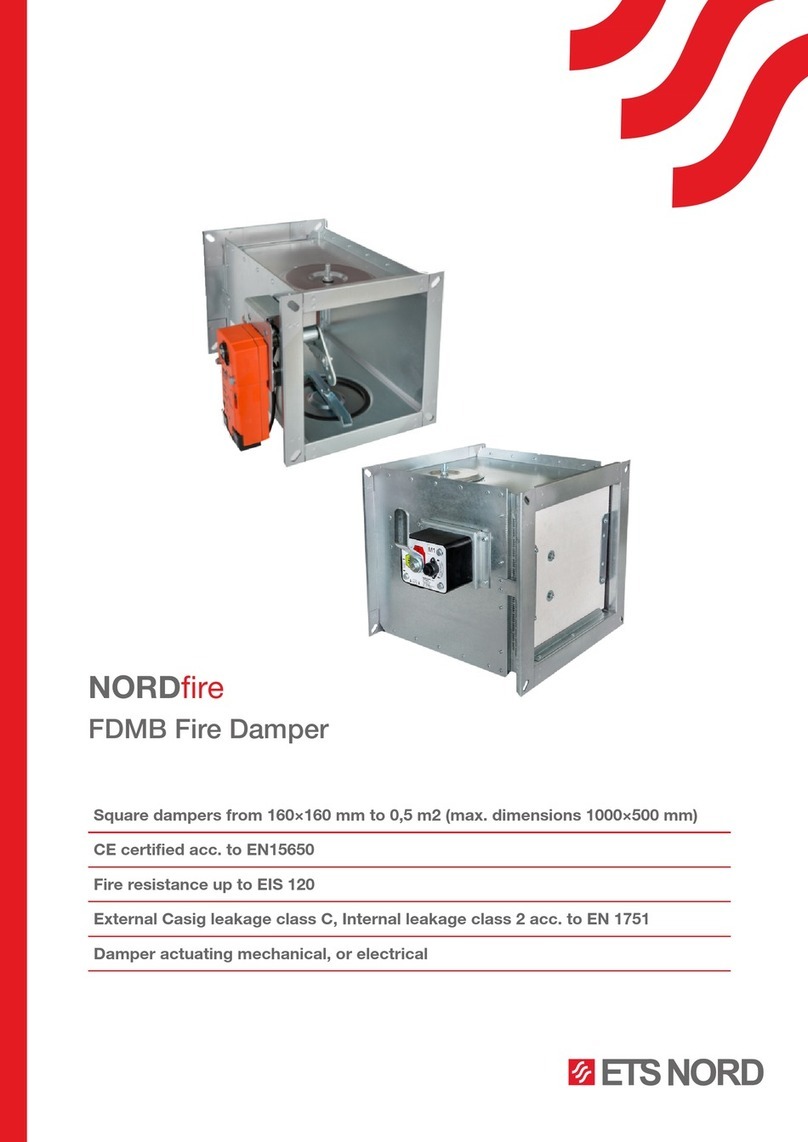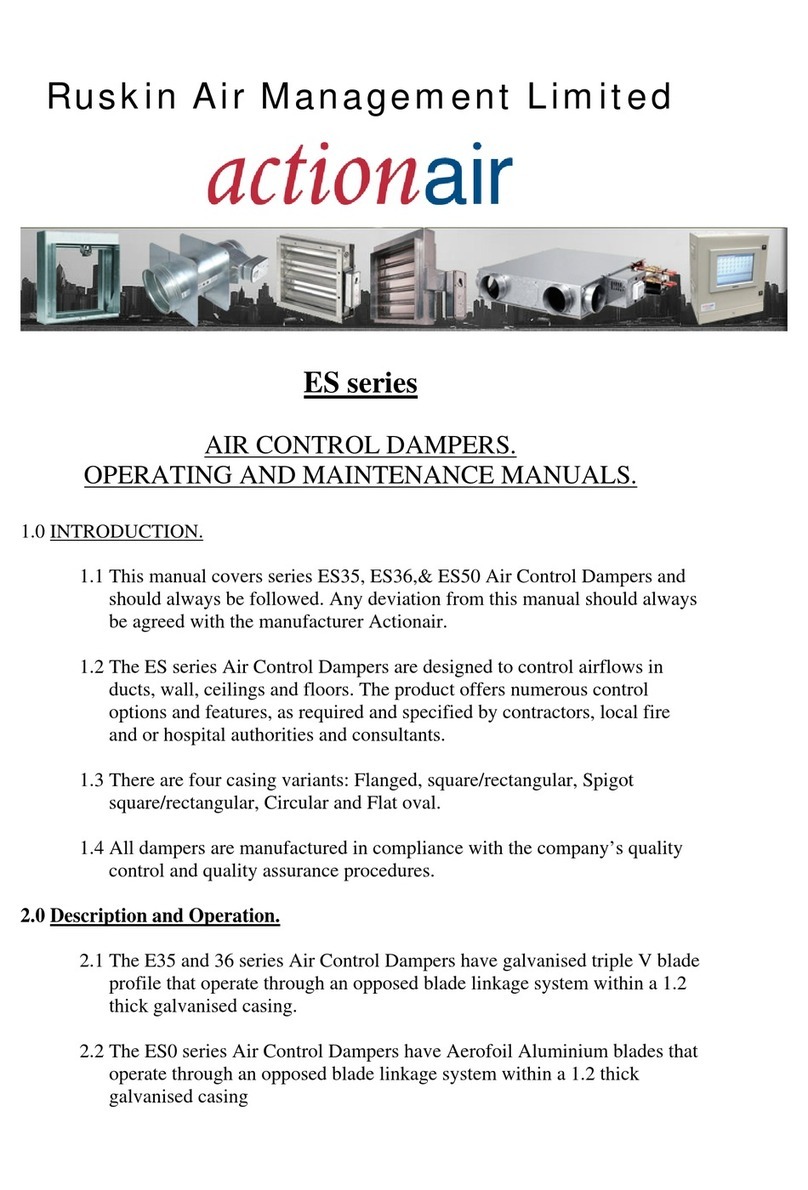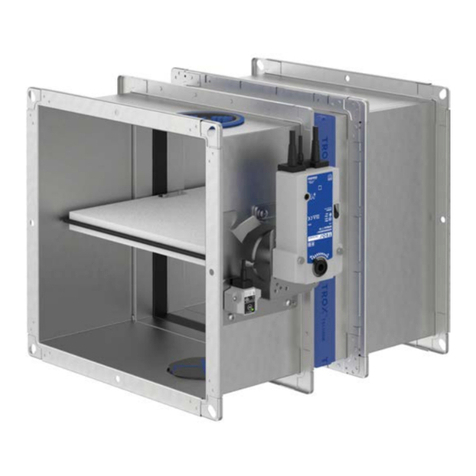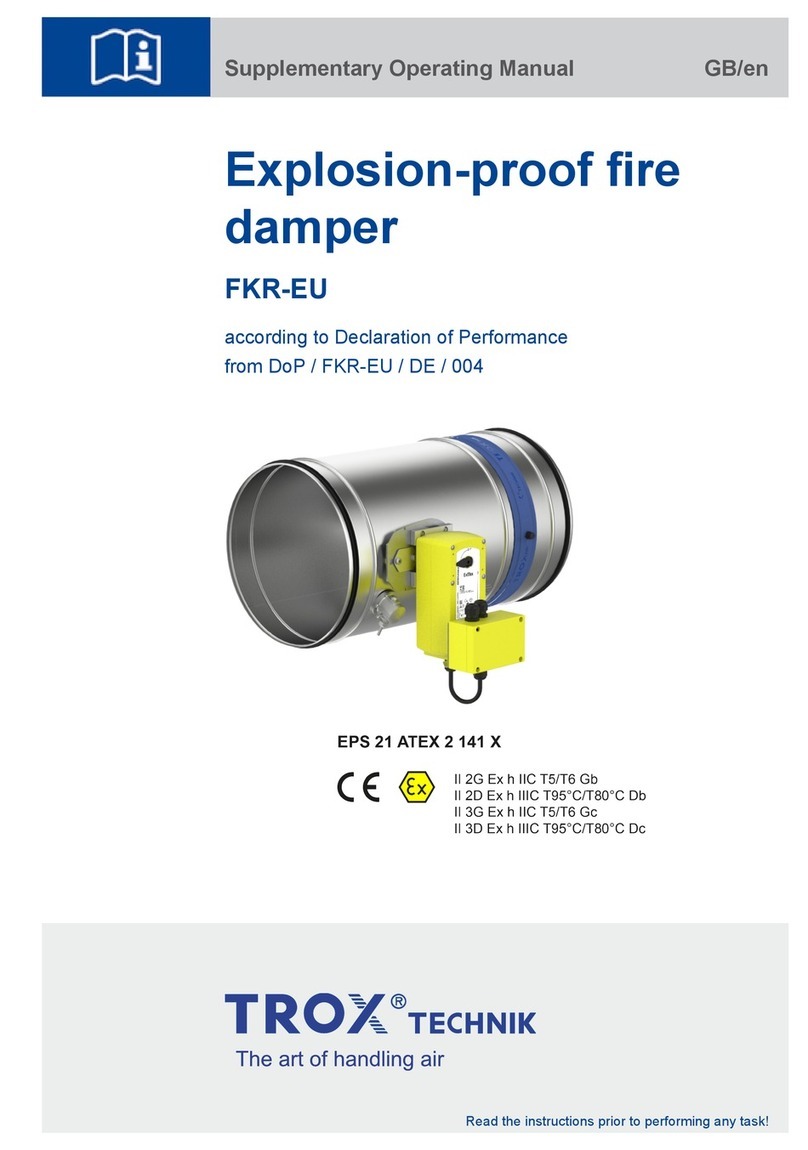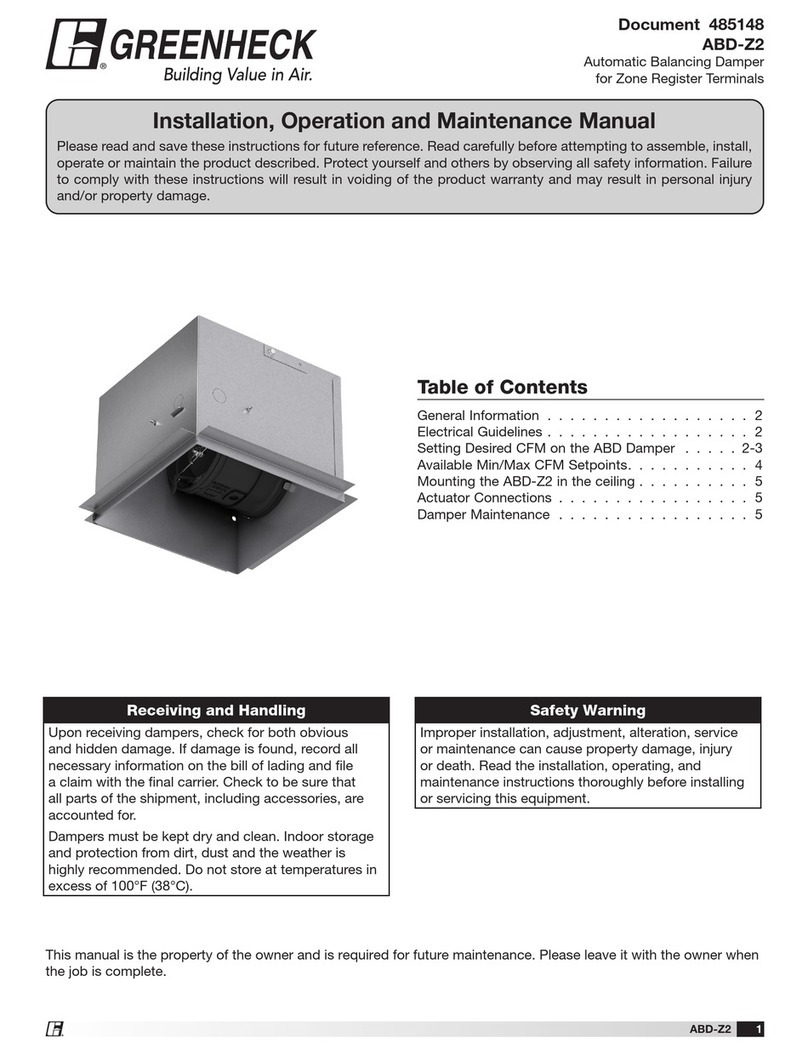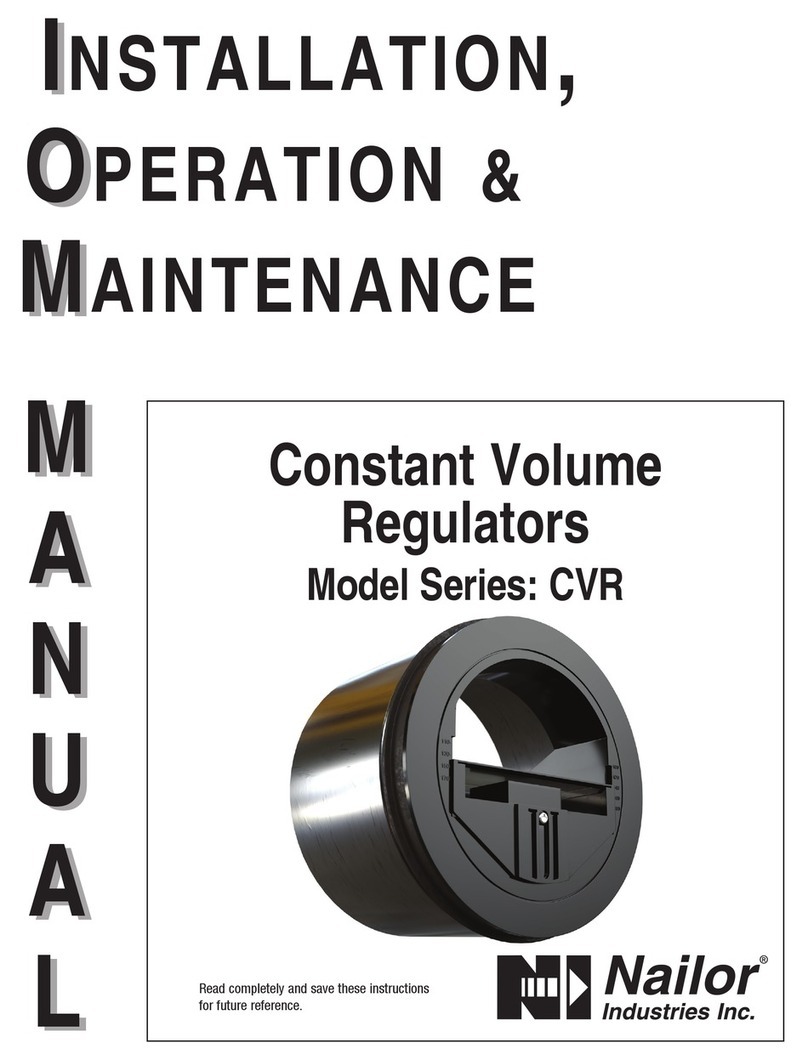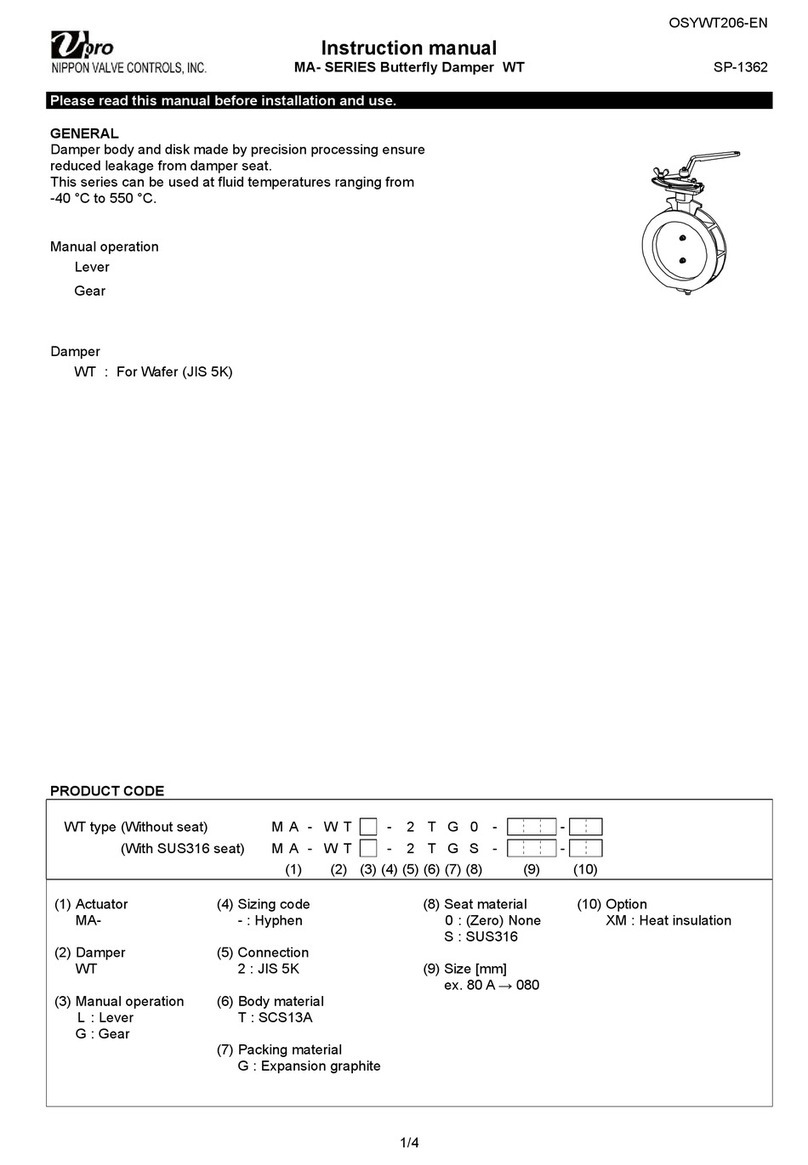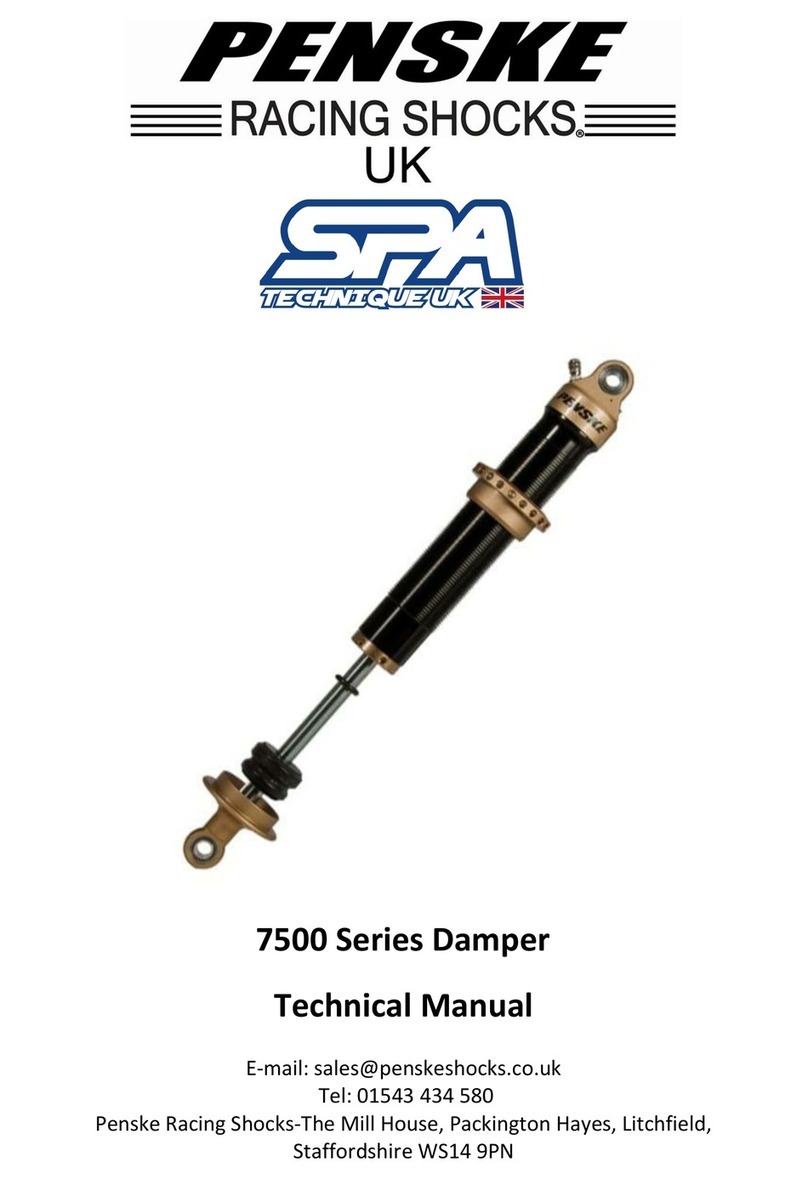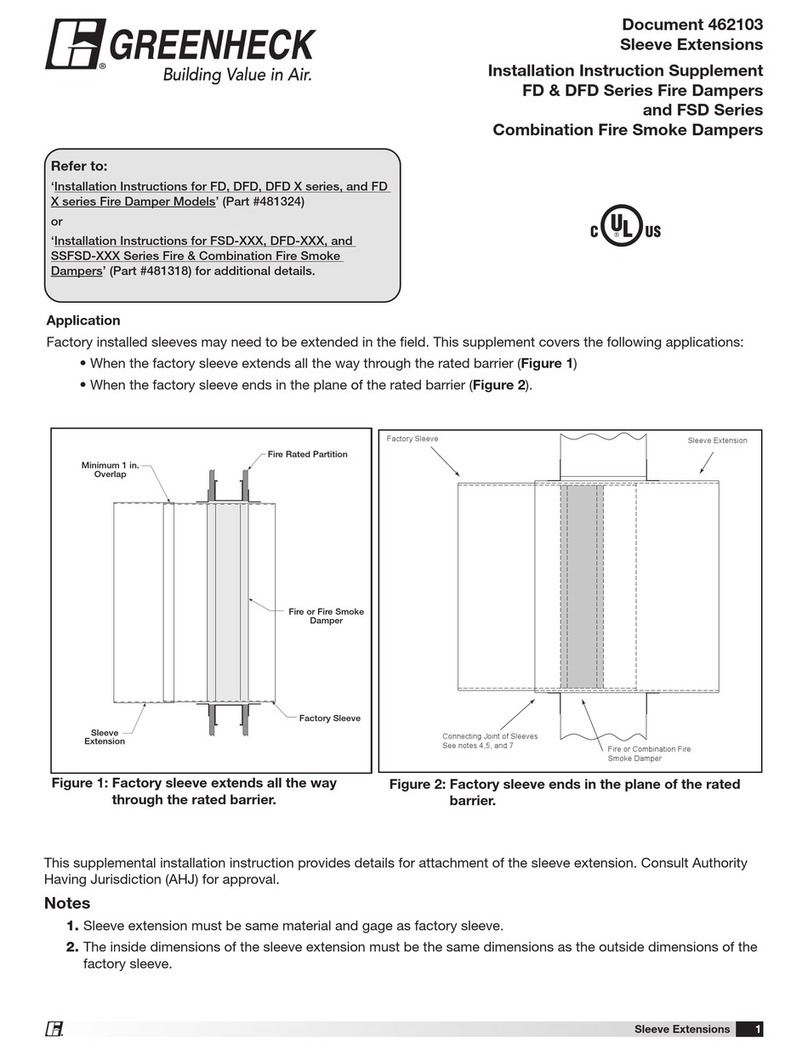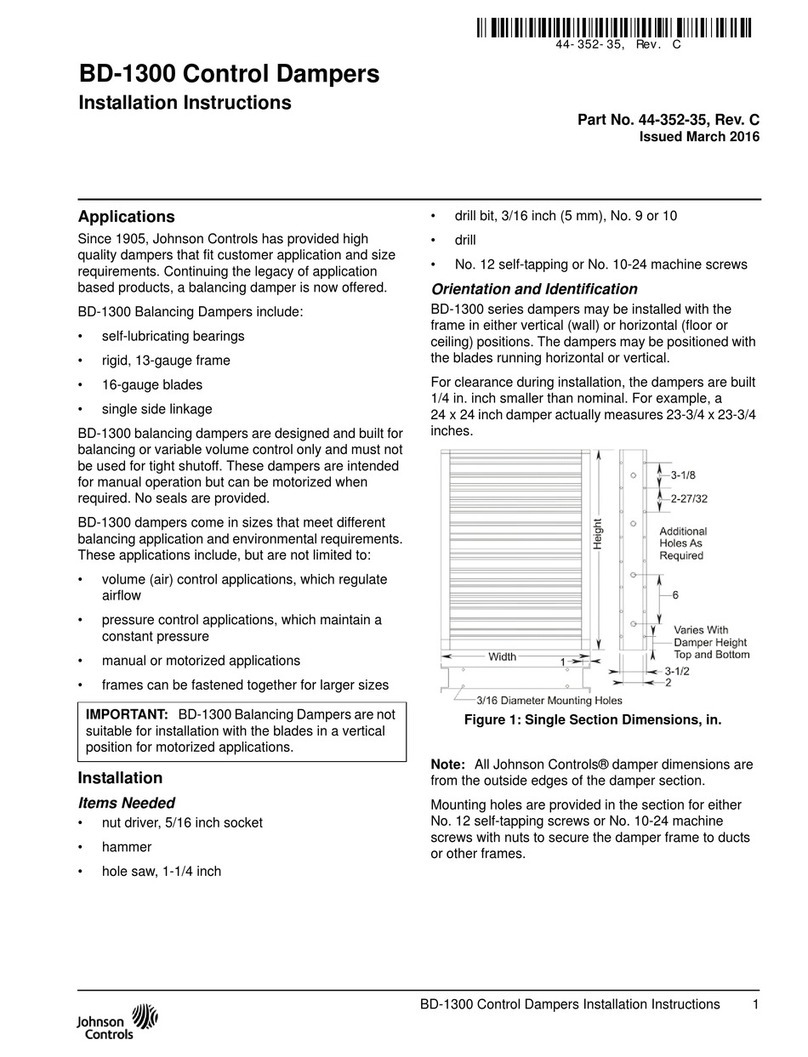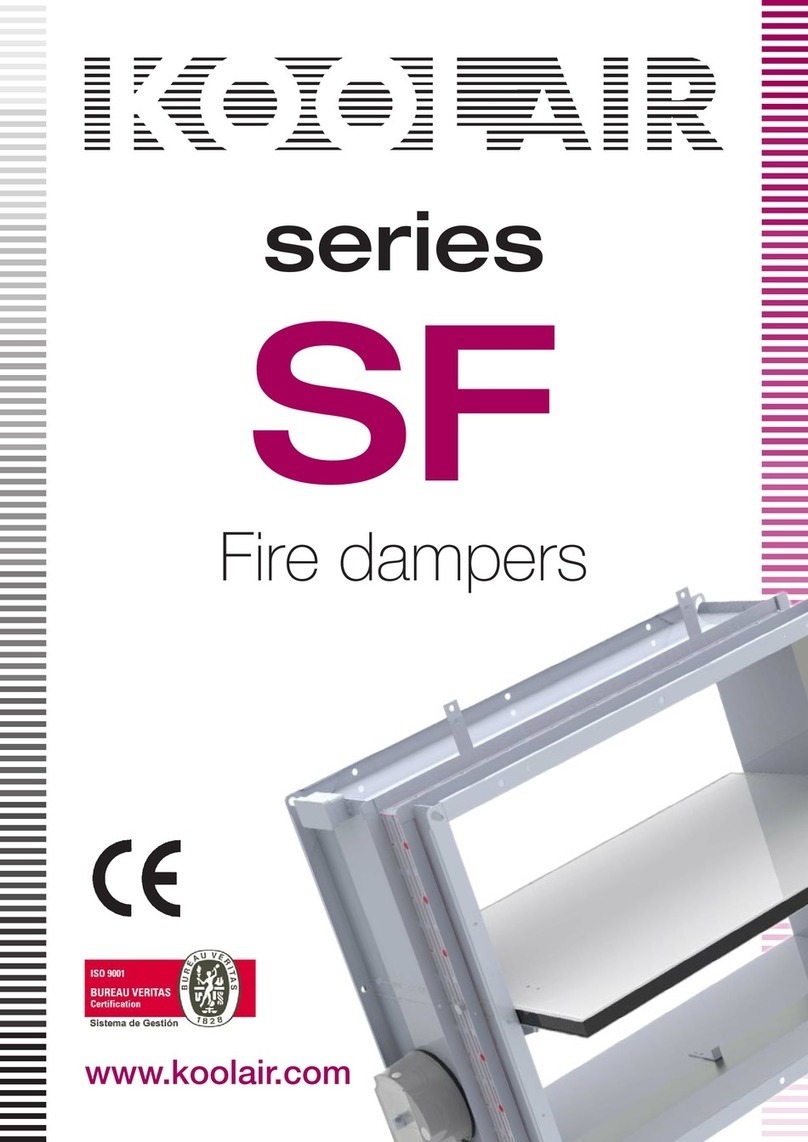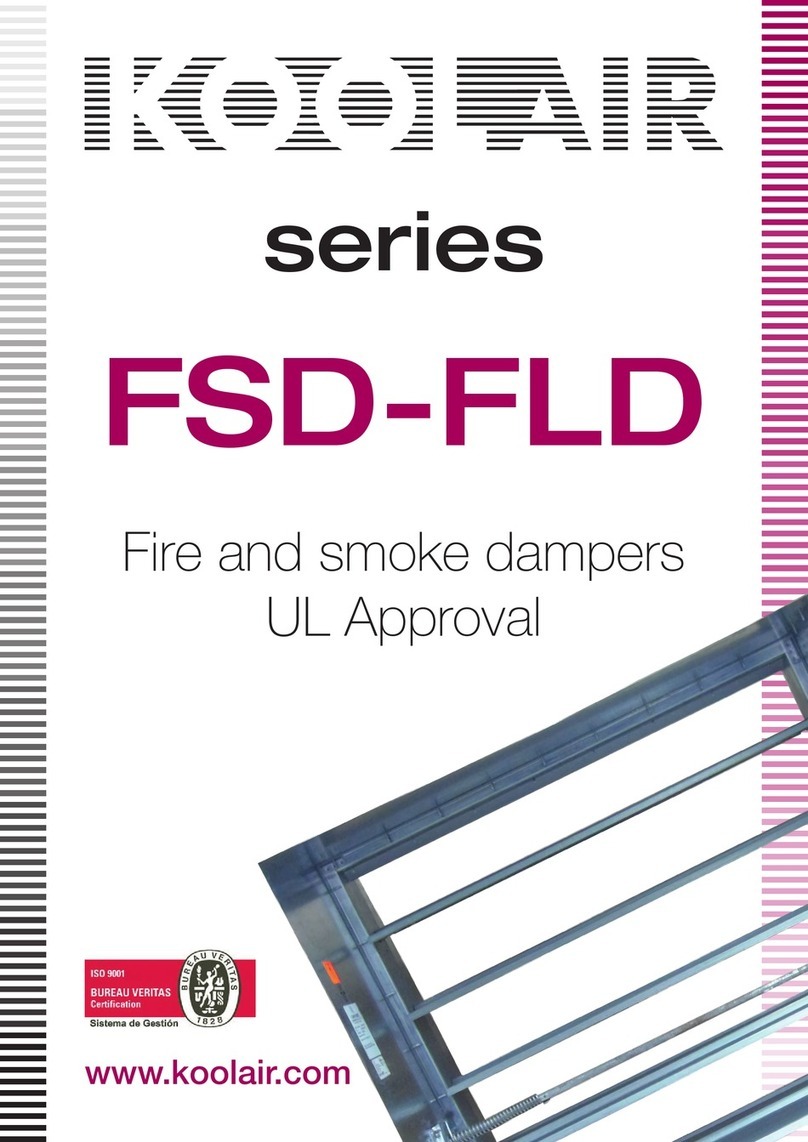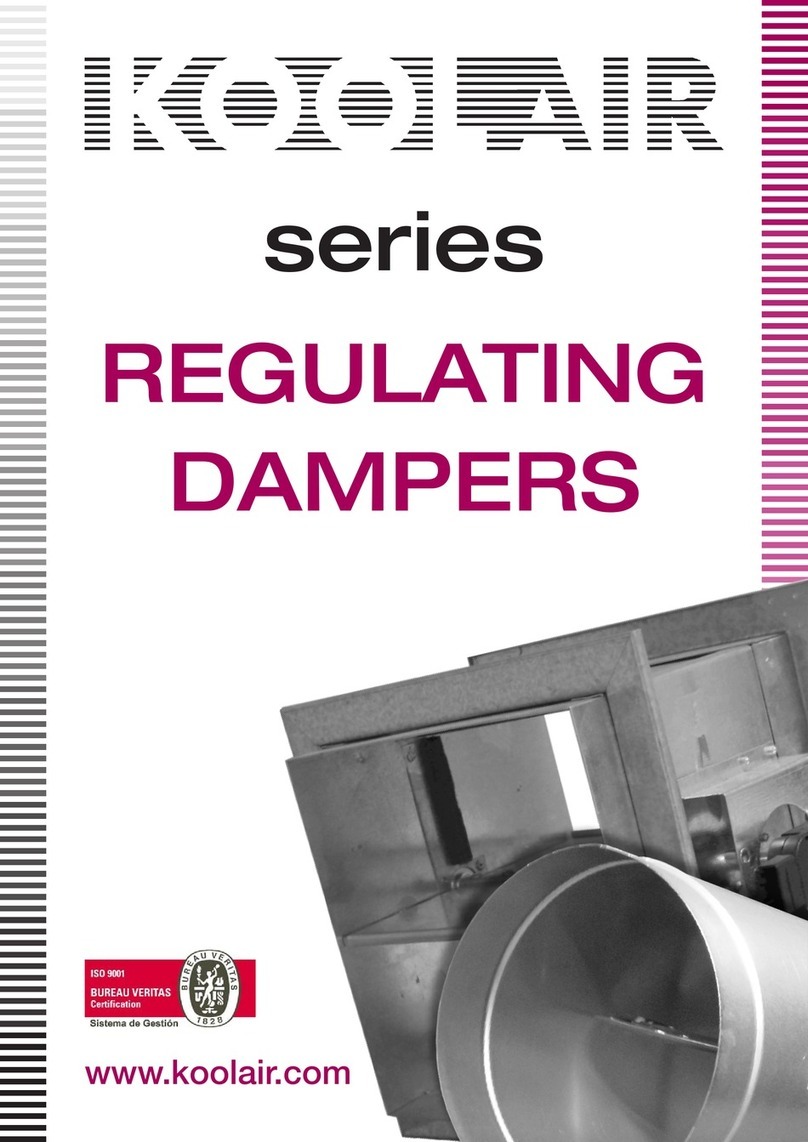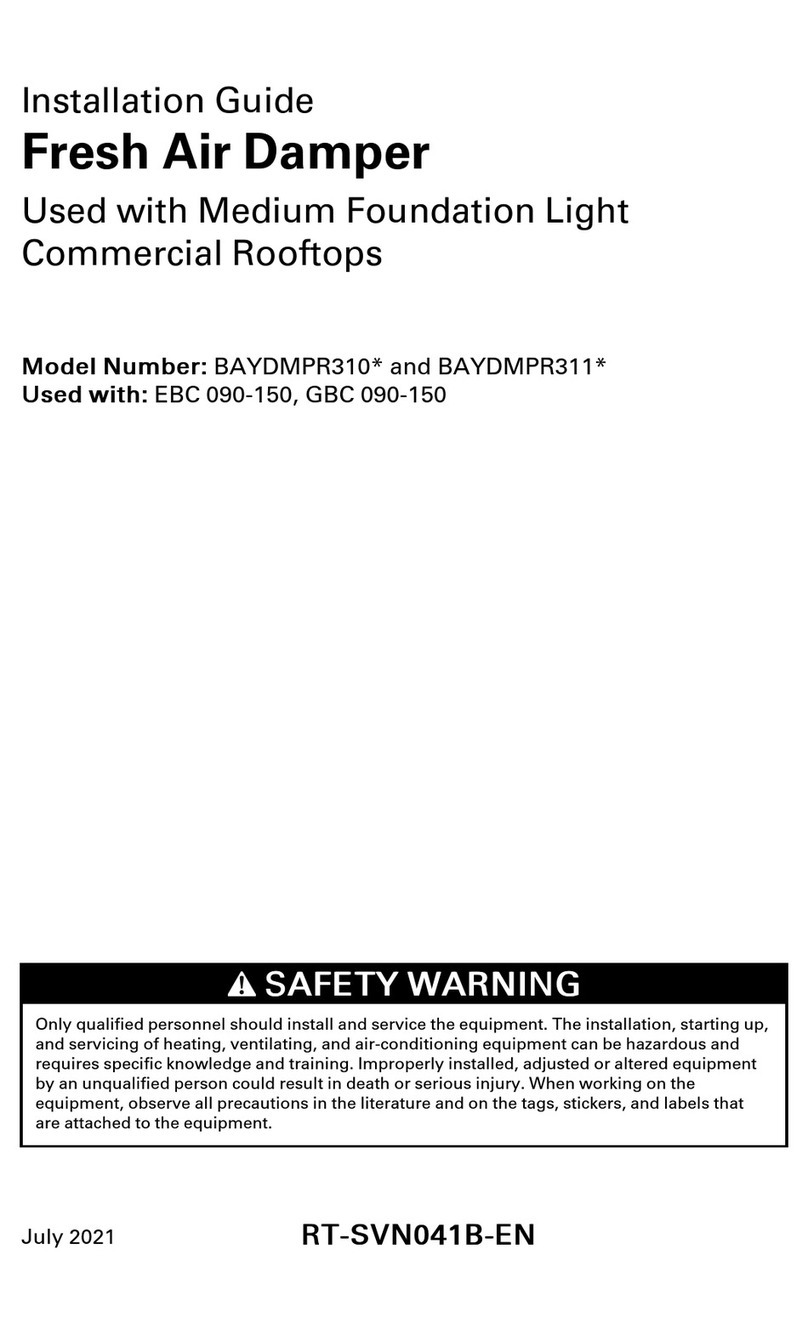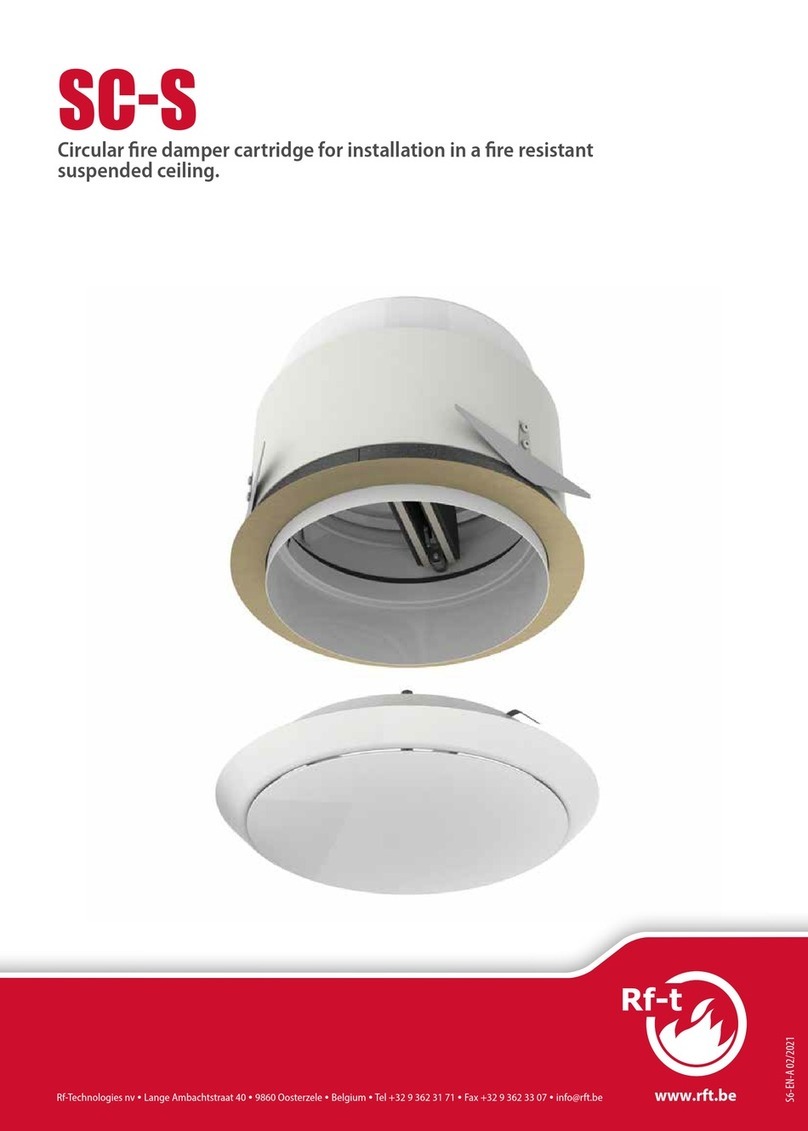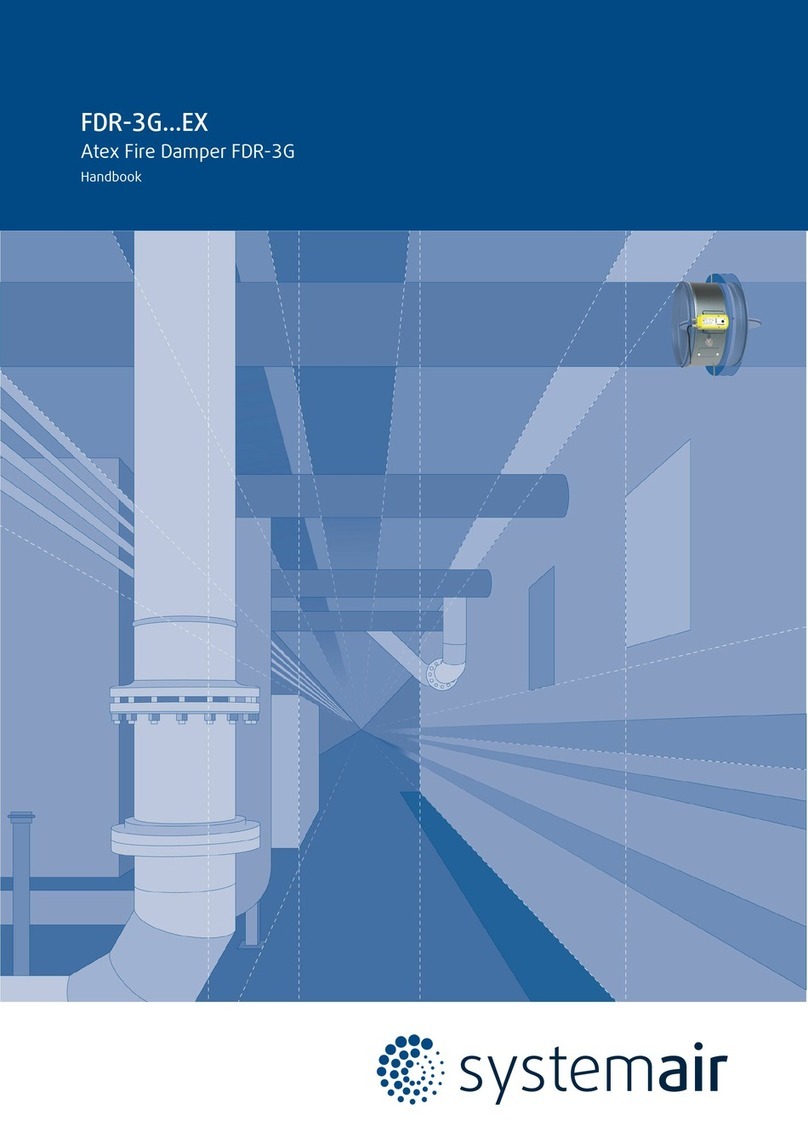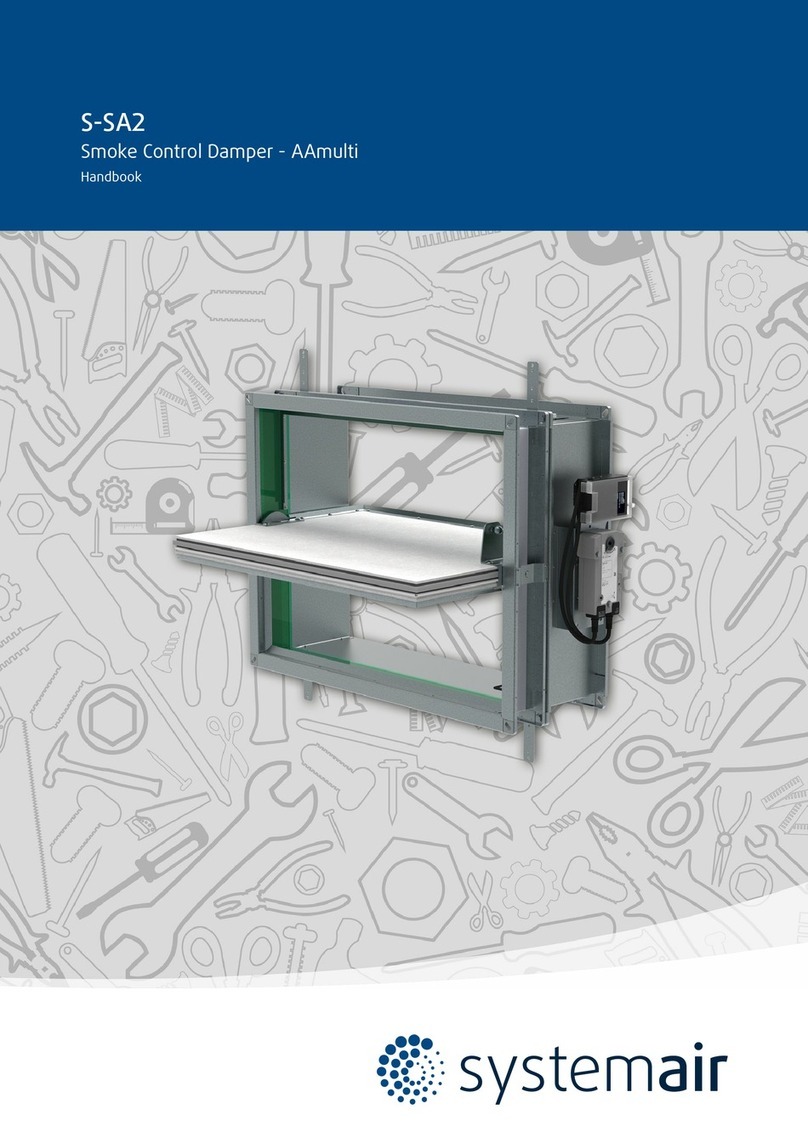
Installation Methods
Installation rules
• The duct connected to the re damper must be supported or hung in such a way that the damper does not carry its
weight. The damper must not support any part of the surrounding construction or wall which could cause damage
and consequent damper failure. It is recommended to connect the damper to a dilatation compensator on either end
of the damper.
• The damper driving mechanism can be placed on either side of the wall, however, it needs to be placed so as to
ensure easy access during inspection.
• According to the standard EN 1366-2, the distance between the re damper bodies must be at least 200 mm. This
condition does not apply for tested distances. Therefore Wet and Soft installations are approved for smaller distances
under condition that the resulted resistivity is reduced to EI90S.
• The distance between the wall/ceiling and the re damper must be at least 75 mm. This condition does not apply for
tested distances. Therefore Wet and Soft installations are approved for smaller distances under condition that the
resulted resistivity is reduced to EI90S.
• The re damper must be installed into a re partition structure in such a way that the damper blade in its closed
position is located inside this structure. A bendable hinge is provided on the damper body which represents a plane
where supporting construction begins. This condition does not apply for installations On & Out.
• For each resistivity the minimum thickness of its supporting construction cannot be decreased as per EN 1366-2 at
least 200 mm from the installation opening.
• The gap in the installation opening between the re damper and the wall/ceiling can be increased by up to 50% of
the gap area, or decreased to the smallest amount possible that still provides sucient space for the installation of
the lling.
IN ACCORDANCE WITH EN 15650, EACH FIRE DAMPER MUST BE INSTALLED ACCORDING TO THE
INSTALLATION. INSTRUCTIONS PROVIDED BY THE MANUFACTURER!
Installation, Maintenance & Operation
Some damper parts may have sharp edges – therefore to protect yourself from harm, please use gloves during damper
installation and manipulation. In order to prevent electric shock, re or any other damage which could result from
incorrect damper usage and operation, it is important to:
1. Ensure that installation is performed by a trained person.
2. Follow the written and depicted instructions provided within Handbook closely.
3. Perform damper inspection in accordance with Handbook.
4. Check the damper’s functionality as per the chapter “Fire Damper Functionality Check” before you install the re
damper. This procedure prevents the installation of a damper that has been damaged during transportation or
handling.
Information about installation, maintenance and operation can be found at www.koolair.com.
FDS-3G 19
Legend:
1. Wet - Wet installation, using Plaster/Mortar/Concrete Filling
2. Dry - Dry installation, using cover boards and mineral wool ling
3. Soft - Soft installation, using mineral wool ling
3H. Hilti - Filling made only from Hilti foam
5.1. On & Out - ON & OUT of the wall installation rated for EI90S, Using 2 layers of Mineral Wool
5.2. On & Out - ON & OUT of the wall installation rated for EI60S, Using 1 layer of Mineral Wool
5.3. On & Out - ON & OUT of the wall installation rated for EI90S, Using Promatect boards
5.4. On & Out - ON & OUT of the wall installation rated for EI60S, Using Promatect boards
a) - Flexible (plasterboard) wall
b) - Concrete/masonry/cellular
concrete (rigid) wall
c) - Concrete/cellular concrete
(rigid) oor/ceiling
Ve - Vertical wall
ho - Horizontal oor/ceiling




















